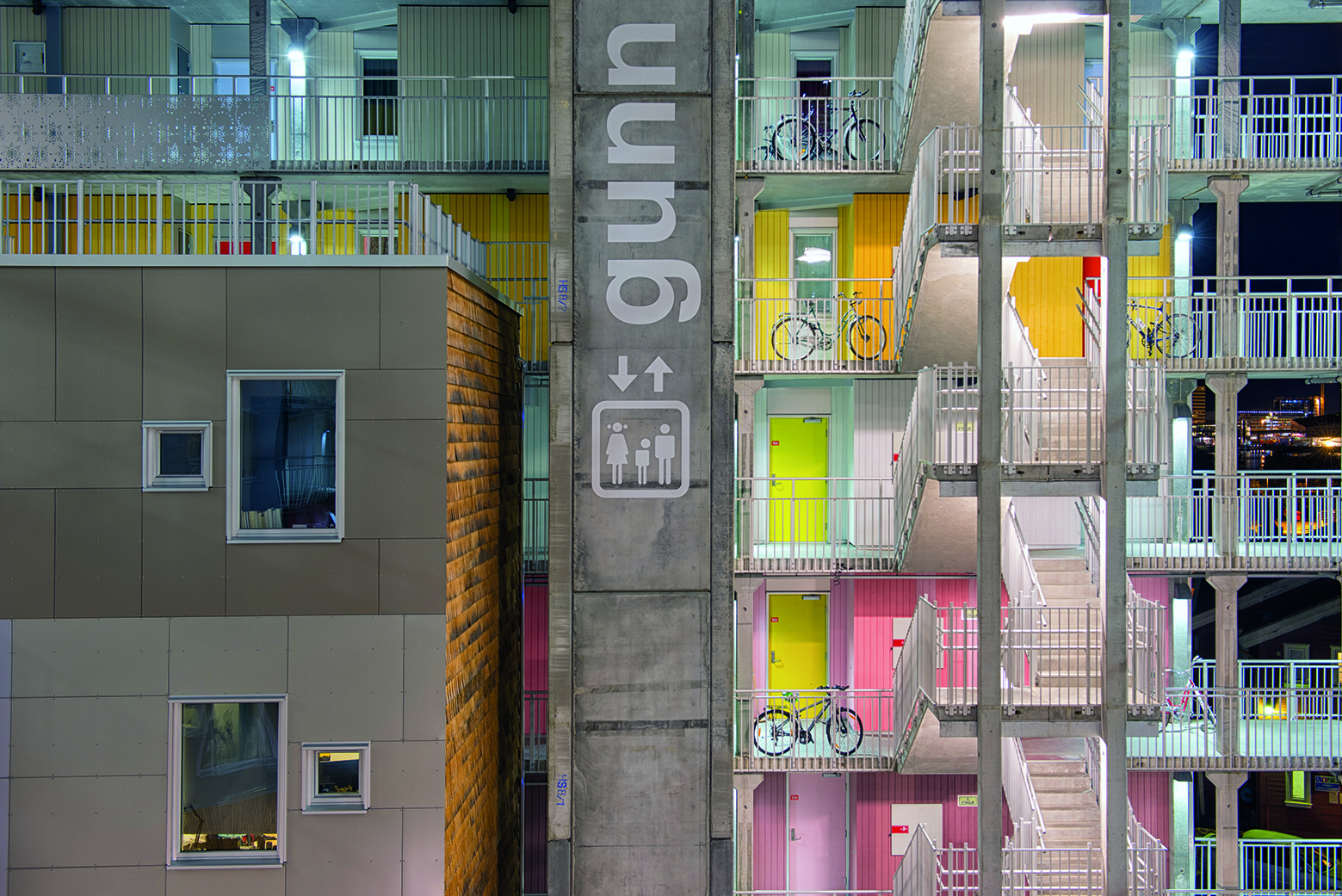
-
Architects: 3RW Arkitekter
- Area: 21750 m²
- Year: 2013
-
Photographs:Cecilie Bannow

Text description provided by the architects. The student houses at Grønneviksøren are an attempt to answer a big challenge in growing cities today. How do we create sustainable architecture for a great number of people – in this case the students – who need homes for a low budget in the city?

Brief description
Grønneviksøren, as a transformation area, is located just outside of Bergen city center, by a 20 minute walk. It consists of 16 different building groups with varying height up to 8 floors. The project is realized as two separate building blocks. It has an open and visual connection to the surrounding areas and to the city. The blocks are connected with external galleries addressed towards the open inner courtyards. The external galleries have a width of 3 meters, which makes them semi public zones. 1With the total capacity of approximately 750 students, the project have had a positive impact on the overall rent levels on small living units in Bergen.

Sustainable Aspect
-The total CO2 emissions account for less than 50% compared to traditional construction.
-The student houses in Grønneviksøren are a low energy project – less than 150 kWh/m²/year.
-Environmentally friendly due to local heating infrastructure.
-“No-cars project”
-High-tech indoor production of complete housing units with all technical installations factory installed, produced in Norway.

Modular but diverse
The Grønneviksøren student housing is located in a transformation area at the outskirt of the Bergen city core. To ensure the projects overall ambition of a clear and open connection to the surroundings, the housing structure is divided in two separate blocks (quarters) consisting of 16 different buildings. The blocks allow free passage to green courtyards that give both the residence and the public a place to linger. Grønneviksøren student housing offers 704 small housing units to an affordable rent. The units are prefabricated modules, all shipped from the factory to the site. Today approximately 730 students reside within single, double, collective and family units.

The 16 buildings have a varying height from 4 to 8 floors and are shaped individually by conducting a careful mix of two different module sizes (depths). By using different window sizes and different façade panels and colors, it breaks up the monotony of a modular building system and gives it a lively layer. The result is far from what one might expect from a modular project of this size. Working both with and against the module principal has been crucial to eliminate the risk of creating monotone and characterless architecture.

Within each block each building is connected through external galleries addressing the green courtyards. The galleries width provides access to the individual housing units as well as a spacious common area for the residents. 16 roof terraces at different locations are accessed through the galleries and provide additional areas for social encounters and activity. In the interface between private units and the public courtyards the galleries and roof terraces play an important role that is crucial for the prosperity of both parts. Grønneviksøren student housing represents one of the largest modular buildings in Europe. With its low cost and varied composition it represents a milestone for prefabricated building projects.





































